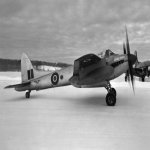On 27 October, U-96 left for her seventh patrol with journalist Lothar-Günther Buchheim aboard and joined group Stoßtrupp three days later. The next day, 31 October, the group made contact with convoy OS 10. U-96 launched four torpedoes at a long range, one of which struck the Dutch SS Bennekom. The ship went down half an hour after being hit, taking nine of her crew of 56 with her. Following the attack, the sloop HMS Lulworth arrived on the scene and forced U-96 under water with gun fire. The U-boat escaped the barrage of 27 depth charges unscathed. The next day, U-96 encountered two more of the escorts, HMS Gorleston and Verbena, but managed to escape again.
(HMS Lulworth, if you're curious, started life as USCGC Chelan. After a successful war with the Royal Navy, she was transferred back to the US Coast Guard and subsequently sold in 1948.)

The U-boat spent November patrolling the North Atlantic as part of groups Störtebecker and Benecke, until secretly entering the neutral port of Vigo, Spain, and being resupplied by the interned German MV Bessel on 27 November. After leaving Vigo, U-96 made for the Straits of Gibraltar, with orders to enter the Mediterranean. However, late on 30 November the U-boat was spotted by a Fairey Swordfish of 812 Naval Air Squadron and heavily damaged by two bombs dropped by the aircraft. Unable to reach her destination, U-96 made for the port of Saint Nazaire. On the way she encountered the Spanish SS Cabo de Hornos, which returned from South America, after delivering a group of Jewish refugees to the Dutch colony of Curaçao, when Brazil denied them entry. When U-96's torpedo missed, the ship was stopped and her papers checked. On 6 December 1941, after 41 days at sea, U-96 returned to Saint Nazaire, having sunk one ship of 5,998 GRT.


























































































